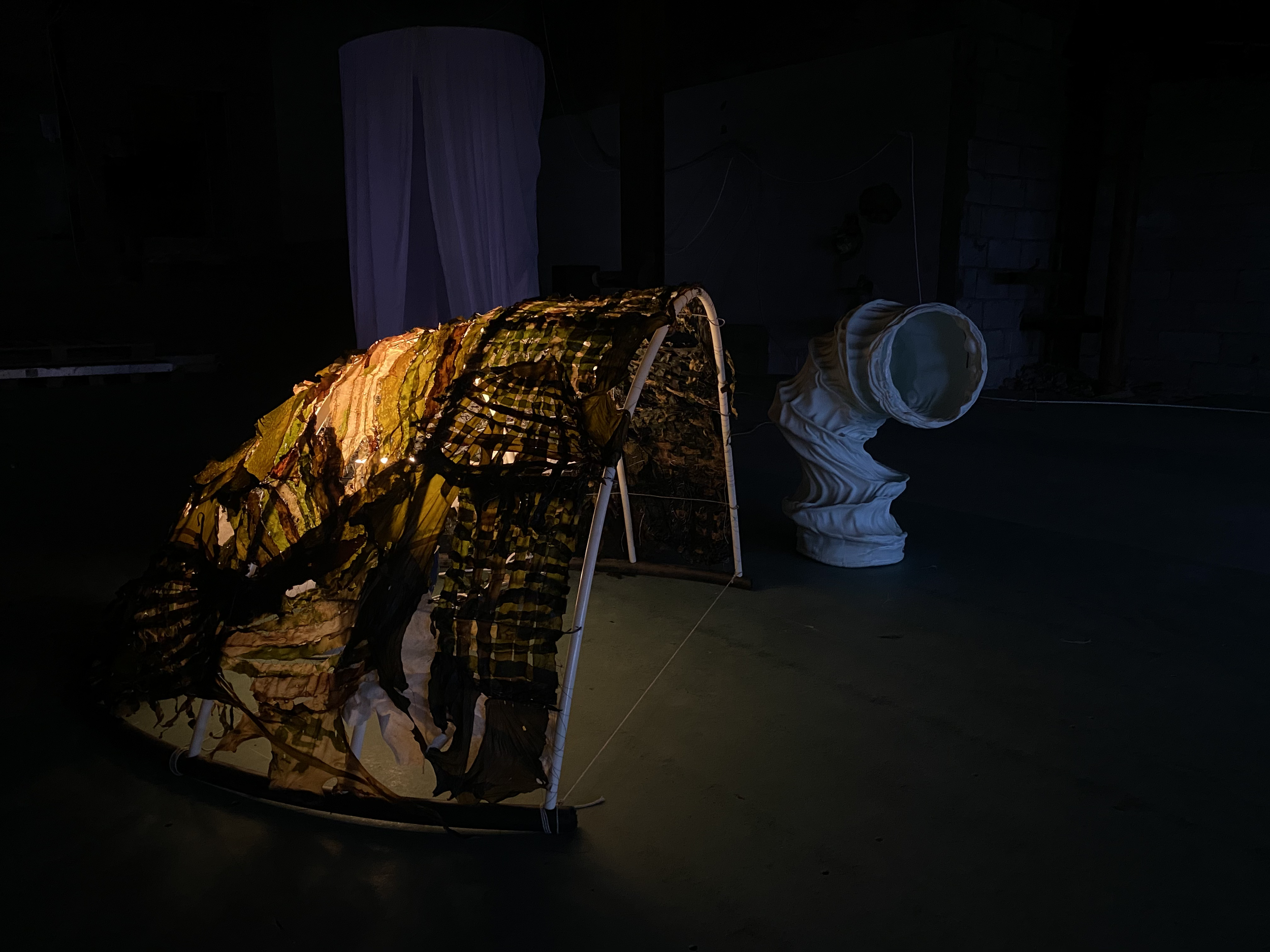Wind Dweller
Wind Dweller
About the project
Wind Dwellers’ arises from a deep fascination for one of nature’s most powerful yet unpredictable forces; the wind. The wind is a natural phenomenon that impacts on all of the body’s senses: it is tactile, produces sound, carries scents; it is like a cosmic breath that stirs, envelops and penetrates our beings. The blowing of the wind as such is invisible; its dynamic quality is detectable merely indirectly, by the movement of things – swaying trees, waving grass, fluttering textiles. The wind breathes life into the lifeless, but can just as easily take life away. It can sensually caress our skin or ruthlessly destroy the harvest.
Our own bodies depend on and bring forth wind: wind stands for the air we inhale and exhale, as well as for the digestive gasses we produce. In this sense, it is both essential and basal. Many people see nature and man as two separate worlds. An elemental juxtaposition of nature and culture is deep-seated and pervasive in Western thought, with nature frequently serving as shorthand for the natural world and the physical environment. Nature is often presumed to be an objective reality with universal qualities unaffected by considerations of time, culture and place, an assumption especially evident in appeals to nature as a source of external authority.
Neoliberalism has generated rationalist models of individual responsibility towards environmental problems which rely on freedom of choice and freewill and encouraged through consumerism. Such regulations are hegemonic in current societal approaches to climate change, yet not conducive to reducing the consequences of the looming our planet is facing. The individualized responsibility, together with the lack of emotional connection between man and nature, ensures that the problem expands and that solutions become increasingly distant.
But the thing is, we do not stand apart as subject and object: humans are as natural as wolves, oaks and rocks. Nature is the air we breathe, the land we tread, the body we move. But as a species with tremendous power through our science and technology, we have a responsibility to use the power well, a responsibility for ourselves and the rest of nature that is our only dwelling.









Project information
-
Wind Dwellers is an explorative crossed media installation, oscillating between different worlds; the physical and digital domain, nature and culture, macrocosm and the microcosm, man and the universe. It explores the sensory capacity of the wind, that can be perceived by our bodies in multiple ways. The animation questions the extent to which humans can identify with the environment around us and what effect this has on our behavior and our feelings of responsibility towards the planet and the challenges it faces.
The landscape of the animation is based on topographic data of the mountains in Stöðvarfjörður, released by NASA Earth Observations (NEO). This data is converted into a 3D model, to create a realistic-looking landscape. The mountains are covered in a skin-like texture, made of scans from seaweeds (a material that closely resembles human skin) found on the shores of the fjord. The use of raw natural materials to mimic human features highlights how man and nature are inextricably linked, and how we are more alike than we think. In fact, nature gave birth to all of us.
-
The soundscape communicates the twin ideas of freedom and control as it seeks to reassure. Most of the sounds are field recordings of the area and serve as a sonic representation of Stöðvarfjörður. The sound carries the story of man and nature and explores the mysterious borderland between the visible and the invisible and the audible and inaudible, touching on the spiritual and psychological aspects of consciousness. The poem binds the visual and sonic landscape and guides you through.
-
The connection between man and nature is fragile and feels increasingly distant from us. The way we treat the earth, the mother who gave birth to us all, is changing. As the connection fades, the desire for imperturbability and security grows. Nature teaches us to look at things as they revolve in their light, to see their shadows and movements.
The cave is made of stitched seaweed and algae. The stitching reinforces the connection of something that was once broken but now continues to live in a new, unique, different but fragile semblance, of which we have to take care altogether to keep it from falling apart. The seaweeds transmit light, are translucent, but not transparent, and resemble a leather-like material after drying. The dried seaweeds remind us of how similar we are. The sculpture allows the audience to step into the mysterious borderland between themselves and nature. The physical movement required to view the inside of the cave shows us the way we should look at our surroundings; make ourselves a little smaller with a humble attitude and can only be touched gently. We should not take the planet for granted, as everything around us will continue to live inside of us.

